Ballooning in Ft. Sumner, New Mexico, March
1991
In March of 1991, a
small group of "Anderson" members took their first-ever trip to Ft.
Sumner New Mexico to test a new "lightweight" ClO instrument. The
original idea was to prove that such an instrument could be built for
the Aurora Flight Sciences "Perseus" UAV. However, as the development
of that UAV hit early snags, it was recognized that 6 identical
instruments could be launched from remote locations such as McMurdo or
Greenland to study the time evolution of ClO and ozone in the polar
vortex, mapping out the link between halogen chemistry and ozone loss
in the dimension that is missed by high flying aircraft, such as the
ER-2. What started out in the summer of 1990 as a small team consisting
of Darin Toohey (ClO), Linnea Avallone (ClO), Joe Demusz (electronics),
Jeff Hazen (hardware), Nate Hazen (hardware), and Norton Allen
(software) blossomed into a larger group that included Rick Stimpfle
(ClO), Bruce Daube (observer), Andy Dessler (ozone), and Ed Thompson
(electronics). The photos below document the first launch of the
"lightweight" ClO instrument, which was a huge success, and resulted in
several publications, including one showing that ClO mixing ratios near
the tropopause were much larger than expected, hence contributing to
larger ozone losses than previously believed. Heterogeneous chemistry
was suspected in these enhancements of ClO, but laboratory measurements
of the important heterogeneous rate parameters were inadequate at that
time to pin down the mechanism. We now believe that reactions of
reservoirs of bromine and
chlorine are responsible for enhancing ClO at the expense of HCl - but
even this remains to be demonstrated.
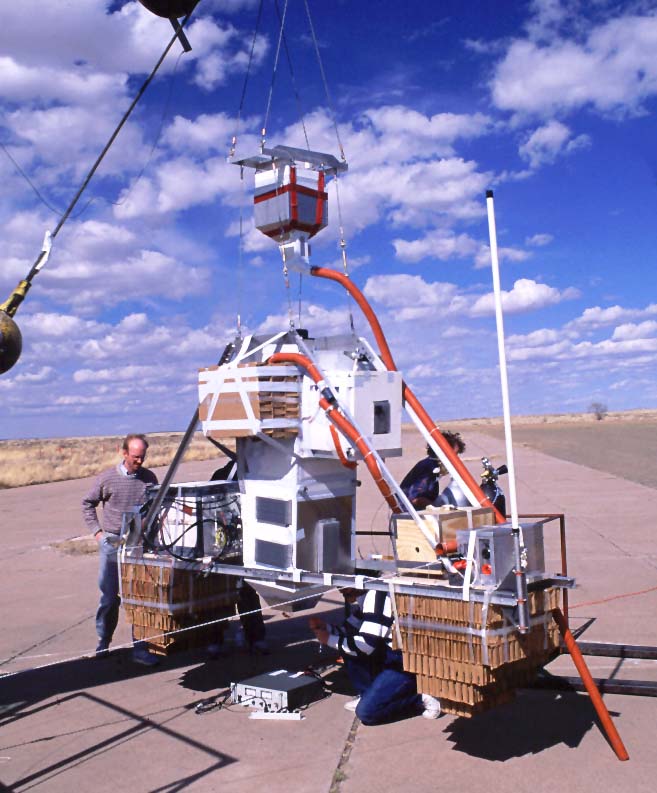
Rick Stimpfle inspects the new "lightweight" ozone instrument - and
gives perspective to the payload. Linnea Avallone is connecting a DC
power supply to the ClO instrument for a functional. Bruce Daube tends
to the bottle of compressed air used to purge the ClO instrument
optics. The ballast hopper was positioned above the instrument to
reduce interference with the measurement on descent (when the
measurements are believed to be the most accurate). Silicone tubing
directs the ballast away from the instrument - although upon recovery,
small steel 'shot' was discovered in just about every part of the
instrument, including within critical computer boards - this was due to
the fact that the ballast hopper fell onto the instrument at touchdown.
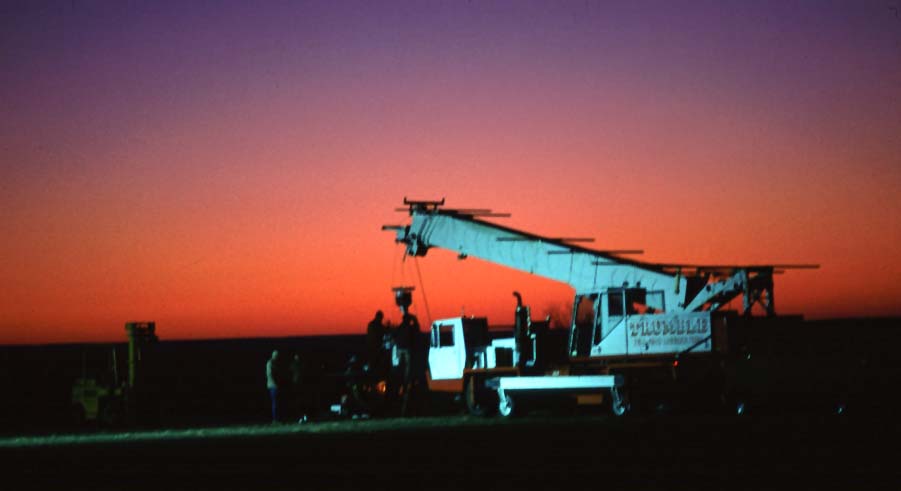
Roll out on March 31, 1991 - looking east toward the sunrise. Note,
this was several months before the eruption of Mount Pinatubo, and the
skies were very clear - it would be a number of years before sunrises
would be this read again! The instrument can barely be seen hanging
from the crane.
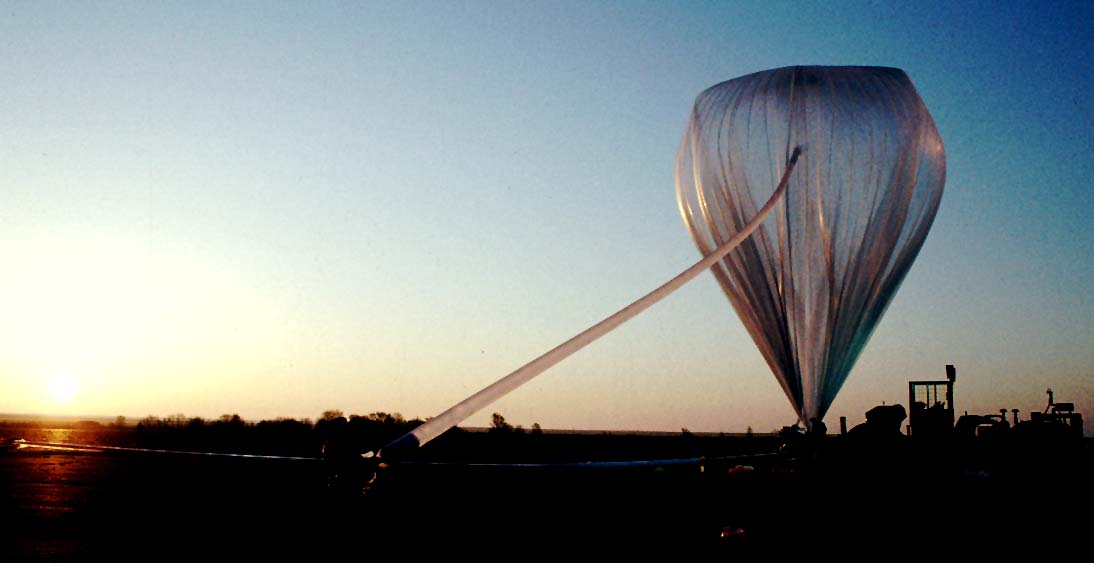
Inflation at sunrise, looking southeast.
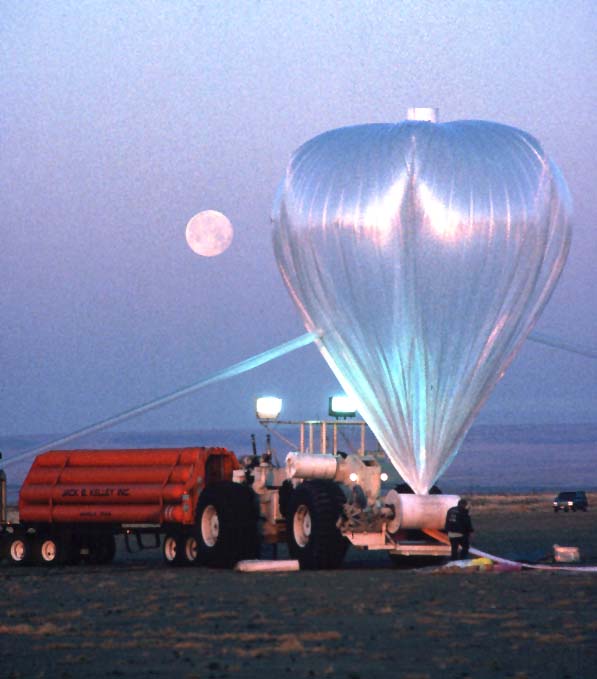
Setting of the full moon. This was a "blue moon" on Easter Sunday
morning - a very special occasion - how could the instrument fail? It
didn't!
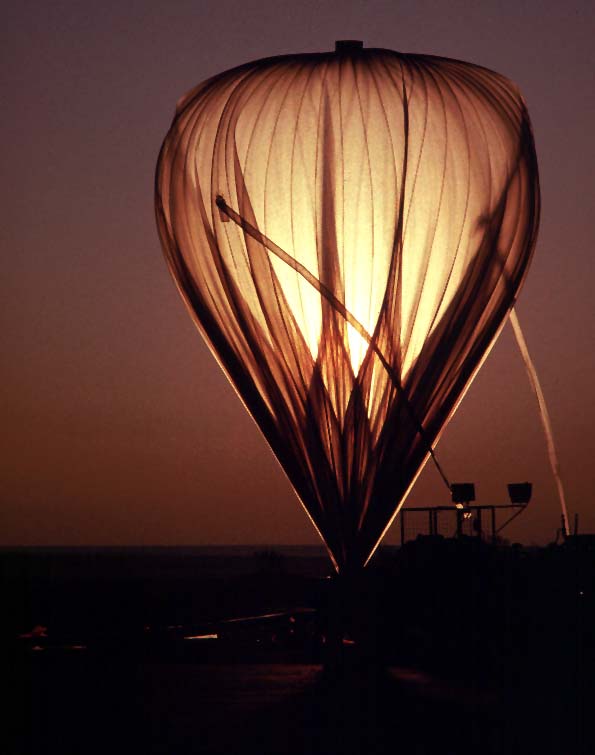
Ok, how could I resist!
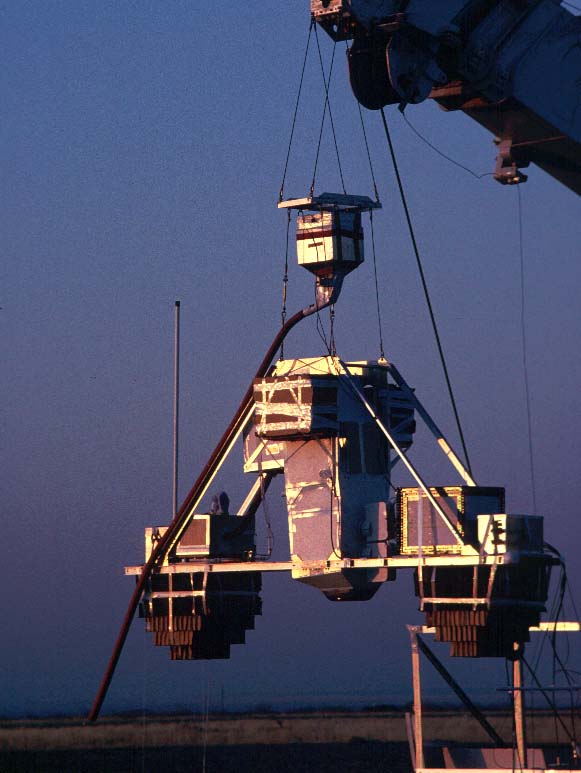
Sunrise reflecting off the gondola - ozone instrument to the
right, ClO roots blower to the left, ClO detector in the center.
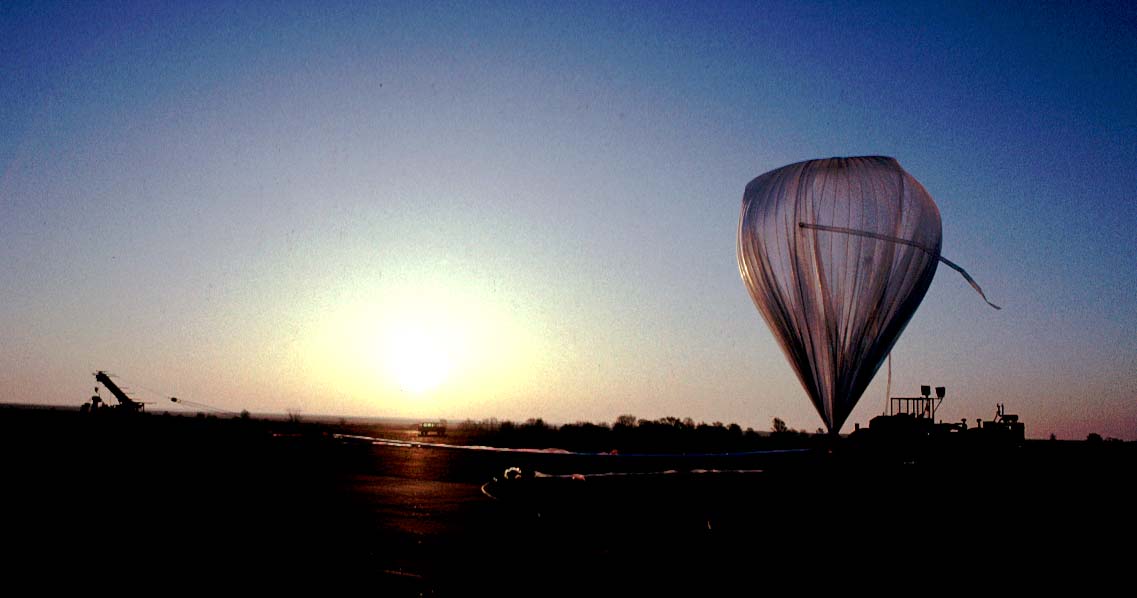
Ready for launch - winds picking up slightly, as shown by the
horizontal position of the fill tube.
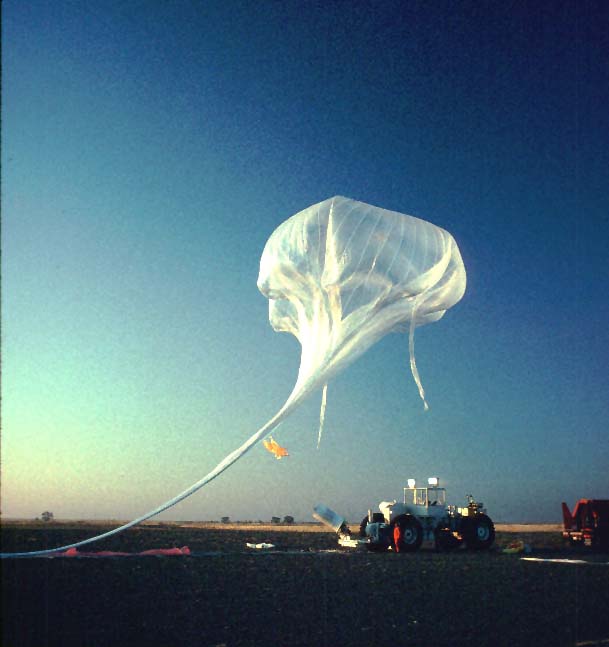
Release!
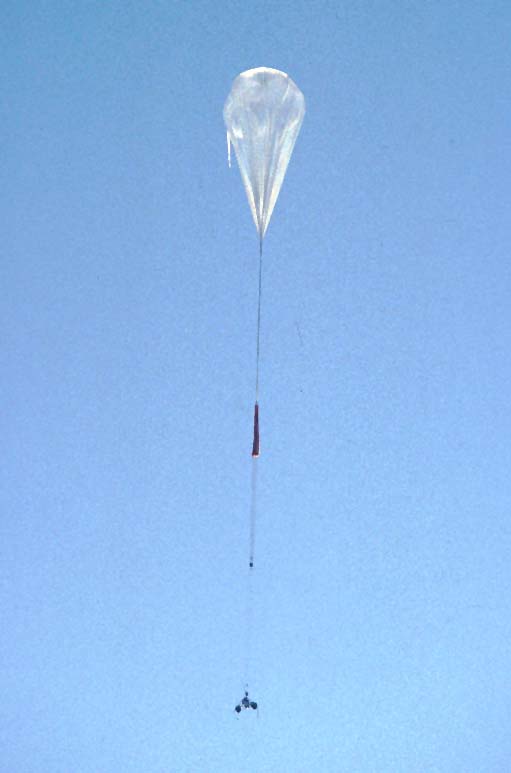
Ascent.









